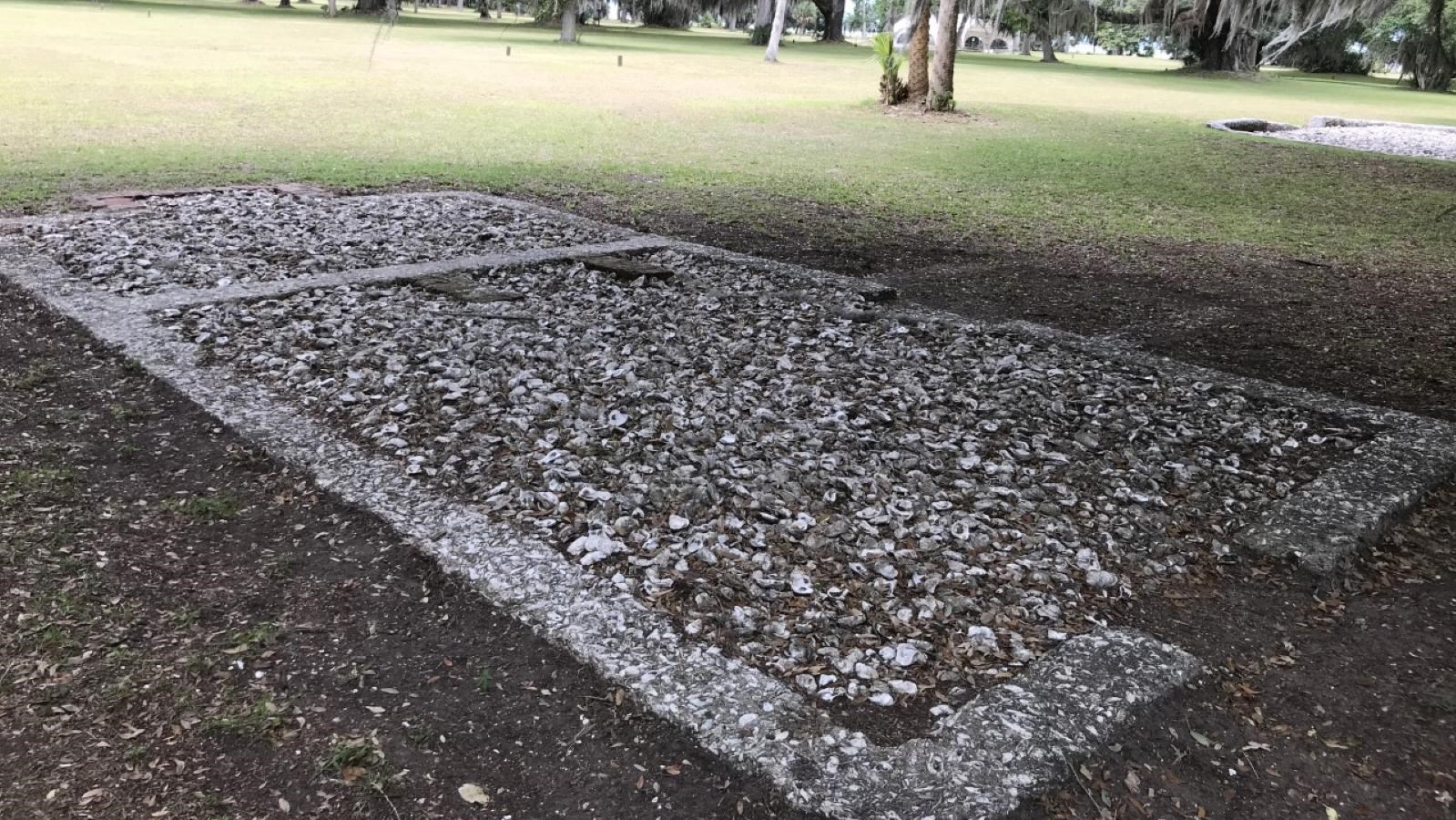Last updated: February 8, 2022
Place
LeVally-Maxwell House

NPS Photo
Historical/Interpretive Information/Exhibits
James Oglethorpe built Frederica for defense and envisioned it as an experiment in social reform. In the 18th century, London swarmed with workmen desperately competing for the same few jobs. Economic conditions, the Georgia trustees believed, cheated everyone of a fair living and filled debtors’ prisons.
This house was the home of John Levally, Jr., a shoemaker from Charing Cross, England. Georgia welcomed men like Levally, the laborers and craftsmen Oglethorpe called England’s “worthy poor.” Georgia offered land and opportunities denied to these people in England. Like the home of Mary Musgrove, the town's interpreter to the Native American population, Levally’s house was made of tabby, a building material like concrete made from sand, lime, oyster shells and water. These materials are ample along the Georgia coast. Tabby was poured into wooden forms to build a wall one layer at a time. The word “tabby” may derive from the Spanish word tapia, which means wall, or may refer to the material’s striped texture, like a tabby cat.
Primrose Maxwell, a later occupant of this house, was a Lieutenant in Oglethrope's regiment. He payed an active role in the 1740 British attack on St. Augustine, in Spanish Florida to the south.
